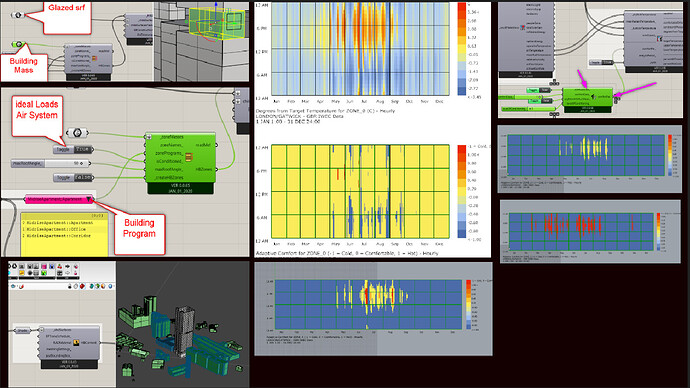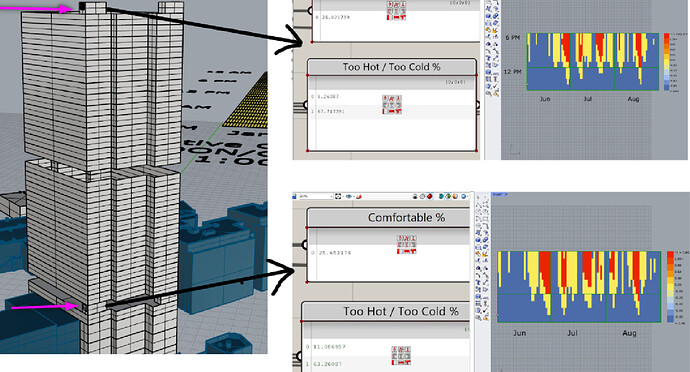Hello community,
I would like to share the Adaptive Comfort Analysis that we have run on a building locate din London and if possible having your opinion on the results.
I have used the algorithm downloaded from Hydra and adapted to our modular tower.
Input module and window geometries
(Please see image below column 1 - img 1)
The apartment module and glazed surface have been input in the algorithm. The default Glazing size has been set as 1660 x 1775mm equal to an area of 2.895m2
- Input data
Building Program
(Please image below see column 1 - img 2)
The “Apartment” building program input in the algorithm will influence how loads are calculated (see img below- bottom part).
Is Conditioned?
Input has been set on True, to calculate the zone to be conditioned with an Ideal Air Loads System
Input Context
(Please see image below column 1 - img 3)
- Reading the analysis
Grasshopper outputs
(Please see image below column 2 - img 1)
The first diagram shows in a gradient of colours the degrees of difference from the ideal comfort temperature.
As we can infer it seems that during the summer period the person will experience a range between 1 and 3.3 degrees over the ideal comfort temperature which occasionally are causing discomfort.
Question1: How is it possible that inside the analyzed volume there is a comfortable temperature during all winter, while during summer, it is colder during the morning?
Important: Please bear in mind that this analysis has been run with the Ideal Loads Air System turned ON. Interestingly, we have tried to run an experiment without the Ideal Air Loads System, Air System turned OFF.
(Please see image below column 2 - img 2)
Question2: The apartment is located in a tower where I suppose adjacent apartments may influence the comfort level with their heating system. Despite this fact, is it possible that the person inside the building may feel cold during over 90% of the time?
Additionally, I have then added this component which I thought might calibrate the results over the European standards rather than Americans.
(Please see image below column 3 - img 1)
The results are the following:
- With “Is Conditioned” parameter OFF
(Please see image below column 3 - img 2)
- With “Is conditioned ” parameter ON
(Please see image below column 3 - img 3)
Question 3: Could someone help me to understand the difference between these data and why with “is conditioned” set on ON the comfort disappears?
Thanks in advance
Apologies for the long text.

